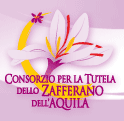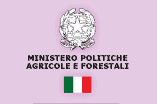

 Disciplinare
Aree di Produzione
Il Marchio DOP
Modulistica
Produzione e Lavorazione
Fasi di Lavorazione
Storia dello Zafferano
Photogallery
Disciplinare
Aree di Produzione
Il Marchio DOP
Modulistica
Produzione e Lavorazione
Fasi di Lavorazione
Storia dello Zafferano
Photogallery
La mitologia greca attribuisce la nascita dello zafferano all’amore di un bellissimo giovane di nome Crocus, che viveva al riparo degli Dei. Crocus si innamorò di una dolce ninfa di nome Smilace che era la favorita del Dio Ermes. Il Nume, per vendicarsi di Crocus, trasformò il giovane in un bulbo.
Lo zafferano è conosciuto da millenni, difatti Omero, Virgilio, Plinio ne parlano spesso nelle loro opere ed Ovidio nelle Metamorfosi. Se ne parla nei papiri egiziani del II secolo a.C. nella Bibbia, e nel IX e XII libro dell’Iliade. Isocrate si faceva profumare i guanciali prima di andare a dormire e le donne troiane profumavano i pavimenti dei loro templi.
Lo zafferano si coltivava in Cilicia, Barbaria e Stiria. Infatti Scano scrive che i Sidoni e gli Stiri lo usavano per colorare i veli delle loro spose ed i sacerdoti per profumare i loro templi per le grandi cerimonie religiose. Dall’Asia la coltivazione si estese in varie parti del mondo arrivando anche in Tunisia e da essa in Spagna, coprendo le zone di Albasete, Teruel, Toledo, Valencia e Murcia.
Da queste zone arrivò in Italia per mano di un certo monaco domenicano appartenente alla famiglia Santucci di Navelli. Nel Sinodo di Toledo, celebrato intorno al 1230 e approvato da Papa Gregorio IX si istituì l’inquisizione. A tale epoca faceva parte del tribunale il monaco Santucci, grande appassionato tanto delle leggi, e tanto dell’agricoltura. Il Santucci si innamorò fortemente della piccola pianta e pensando ai suoi terreni dolci della piana di Navelli pensò che questa pianta potesse dare molti buoni frutti.
Difatti lo zafferano qui trovò un habitat molto favorevole, venne fuori un prodotto di gran lunga superiore a quello coltivato in altre nazioni. Rapidamente la coltura si estese nei dintorni e le famiglie nobili ( che da poco avevano fondato la città di L’Aquila, Notar Nanni, Ciolina, Bonanni, Signorini, ecc.) della città dettero vita in breve tempo a grandi mercati con le città di Milano e Venezia. Il nome scientifico Crocus deriva dal greco Krokos, invece il nome zafferano deriva dall’arabo Zaafran.
Lo zafferano (Crocus Sativus Linneo) è una piccola pianta di appena 12/40cm. di altezza. Detta pianta che in tecnica colturale viene riprodotta per propagazione vegetativa, cioè con il trapianto dei bulbi poiché la pianta non produce seme per la particolare disposizione degli organi di riproduzione (androceo e gineceo) è un triploide con 2N=24 (Nathea, 1977).
Nel XIII secolo la città di L’Aquila era appena nata e subito diventò famosa proprio per le qualità superiori dello zafferano aiutando così l’economia dell’allevamento delle pecore e la produzione della lana. Dalla zona dell’Altopiano di Navelli, la coltivazione si estese per tutta la provincia dell’Aquila realizzando un commercio favoloso.
Dopo breve tempo l’Aquila fu in grado di organizzare commerci con le città più importanti: Milano e Venezia, nonché con le città estere: Francoforte, Marsiglia, Vienna, Norimberga ed Augusta. Il Re Roberto D’Angiò (1317) abolì le tasse sullo zafferano per favorirne il commercio.
Ma poco dopo la comunità dell’Aquila si contrappose al Re, il quale non solo rimise le tasse ma le aumentò per poter realizzare importanti opere cittadine quali: l’ospedale nuovo e la basilica dedicata a San Berardino da Siena. Affermatosi a livello internazionale lo zafferano dell’Aquila veniva conteso da tanti commercianti.
Il sig. Jobst Findenken di Norimberga veniva di persona a L’Aquila per comperare lo zafferano e poi strada facendo lo sofisticava con altri tipi di zafferano ed arrivato a dimora lo vendeva. Ma ben presto fu scoperto e il 27 luglio 1444 venne bruciato vivo con il prodotto che portava, era il lunedì dopo il giorno di S. Jacopo. Sua moglie invece fu mandata in esilio sull’altra sponda del Reno.
Nel 1513 le imprese più importanti di Norimberga acquistarono case a L’Aquila e divennero cittadini aquilani. Con questo soggiorno prolungato nella città comperarono tutto il prodotto: essi erano: Tuder, Immoff, Wachter e Munzer.
Nel XV secolo l’Aquila segnò il periodo più importante della sua storia tanto che il Re Ferrante I d’Aragona decretò il diritto alla città dell’Aquila di aprire una Università e questo successe in concomitanza dell’apertura di una fiorente tipografia da parte di un commerciante di zafferano e la posa della prima pietra della famosa basilica di S. Berardino.
Il Mausoleo invece fu finanziato per intero da un signore Jacopo Notar Nanni nativo di Civitaretenga, grande amico di San Berardino e grande commerciante di zafferano e di lana perché validissimo allevatore di pecore.
La Città di L’Aquila per molte volte si è trovata in difficoltà soprattutto sotto il dominio spagnolo e, grazie ai produttori di zafferano che svendettero il prodotto, poté pagare le gabelle impostegli. Con l’arrivo dei Borboni sul regno di Napoli fu data una nuova fiducia ai coltivatori tanto che nel 1830 si raggiunse una produzione di 45 ql. su una superfice di 450Ha.
Ma nel XX° secolo la coltivazione comincia di nuovo ad indietreggiare, prima a causa di conflitti e poi a causa dei soprusi da parte dei commercianti che non volevano concedere un pagamento equo. Grazie alla tenacia di Silvio Sarra di Civitaretenga, amante sia della pianta dello zafferano che della storia gloriosa di essa, il quale convinse alcuni coltivatori ad unirsi in Cooperativa riportando al suo posto ed al suo splendore quella spezia tanto diffusa su tutto il territorio italiano.
Lo zafferano è conosciuto da millenni, difatti Omero, Virgilio, Plinio ne parlano spesso nelle loro opere ed Ovidio nelle Metamorfosi. Se ne parla nei papiri egiziani del II secolo a.C. nella Bibbia, e nel IX e XII libro dell’Iliade. Isocrate si faceva profumare i guanciali prima di andare a dormire e le donne troiane profumavano i pavimenti dei loro templi.
Lo zafferano si coltivava in Cilicia, Barbaria e Stiria. Infatti Scano scrive che i Sidoni e gli Stiri lo usavano per colorare i veli delle loro spose ed i sacerdoti per profumare i loro templi per le grandi cerimonie religiose. Dall’Asia la coltivazione si estese in varie parti del mondo arrivando anche in Tunisia e da essa in Spagna, coprendo le zone di Albasete, Teruel, Toledo, Valencia e Murcia.
Da queste zone arrivò in Italia per mano di un certo monaco domenicano appartenente alla famiglia Santucci di Navelli. Nel Sinodo di Toledo, celebrato intorno al 1230 e approvato da Papa Gregorio IX si istituì l’inquisizione. A tale epoca faceva parte del tribunale il monaco Santucci, grande appassionato tanto delle leggi, e tanto dell’agricoltura. Il Santucci si innamorò fortemente della piccola pianta e pensando ai suoi terreni dolci della piana di Navelli pensò che questa pianta potesse dare molti buoni frutti.
Difatti lo zafferano qui trovò un habitat molto favorevole, venne fuori un prodotto di gran lunga superiore a quello coltivato in altre nazioni. Rapidamente la coltura si estese nei dintorni e le famiglie nobili ( che da poco avevano fondato la città di L’Aquila, Notar Nanni, Ciolina, Bonanni, Signorini, ecc.) della città dettero vita in breve tempo a grandi mercati con le città di Milano e Venezia. Il nome scientifico Crocus deriva dal greco Krokos, invece il nome zafferano deriva dall’arabo Zaafran.
Lo zafferano (Crocus Sativus Linneo) è una piccola pianta di appena 12/40cm. di altezza. Detta pianta che in tecnica colturale viene riprodotta per propagazione vegetativa, cioè con il trapianto dei bulbi poiché la pianta non produce seme per la particolare disposizione degli organi di riproduzione (androceo e gineceo) è un triploide con 2N=24 (Nathea, 1977).
Nel XIII secolo la città di L’Aquila era appena nata e subito diventò famosa proprio per le qualità superiori dello zafferano aiutando così l’economia dell’allevamento delle pecore e la produzione della lana. Dalla zona dell’Altopiano di Navelli, la coltivazione si estese per tutta la provincia dell’Aquila realizzando un commercio favoloso.
Dopo breve tempo l’Aquila fu in grado di organizzare commerci con le città più importanti: Milano e Venezia, nonché con le città estere: Francoforte, Marsiglia, Vienna, Norimberga ed Augusta. Il Re Roberto D’Angiò (1317) abolì le tasse sullo zafferano per favorirne il commercio.
Ma poco dopo la comunità dell’Aquila si contrappose al Re, il quale non solo rimise le tasse ma le aumentò per poter realizzare importanti opere cittadine quali: l’ospedale nuovo e la basilica dedicata a San Berardino da Siena. Affermatosi a livello internazionale lo zafferano dell’Aquila veniva conteso da tanti commercianti.
Il sig. Jobst Findenken di Norimberga veniva di persona a L’Aquila per comperare lo zafferano e poi strada facendo lo sofisticava con altri tipi di zafferano ed arrivato a dimora lo vendeva. Ma ben presto fu scoperto e il 27 luglio 1444 venne bruciato vivo con il prodotto che portava, era il lunedì dopo il giorno di S. Jacopo. Sua moglie invece fu mandata in esilio sull’altra sponda del Reno.
Nel 1513 le imprese più importanti di Norimberga acquistarono case a L’Aquila e divennero cittadini aquilani. Con questo soggiorno prolungato nella città comperarono tutto il prodotto: essi erano: Tuder, Immoff, Wachter e Munzer.
Nel XV secolo l’Aquila segnò il periodo più importante della sua storia tanto che il Re Ferrante I d’Aragona decretò il diritto alla città dell’Aquila di aprire una Università e questo successe in concomitanza dell’apertura di una fiorente tipografia da parte di un commerciante di zafferano e la posa della prima pietra della famosa basilica di S. Berardino.
Il Mausoleo invece fu finanziato per intero da un signore Jacopo Notar Nanni nativo di Civitaretenga, grande amico di San Berardino e grande commerciante di zafferano e di lana perché validissimo allevatore di pecore.
La Città di L’Aquila per molte volte si è trovata in difficoltà soprattutto sotto il dominio spagnolo e, grazie ai produttori di zafferano che svendettero il prodotto, poté pagare le gabelle impostegli. Con l’arrivo dei Borboni sul regno di Napoli fu data una nuova fiducia ai coltivatori tanto che nel 1830 si raggiunse una produzione di 45 ql. su una superfice di 450Ha.
Ma nel XX° secolo la coltivazione comincia di nuovo ad indietreggiare, prima a causa di conflitti e poi a causa dei soprusi da parte dei commercianti che non volevano concedere un pagamento equo. Grazie alla tenacia di Silvio Sarra di Civitaretenga, amante sia della pianta dello zafferano che della storia gloriosa di essa, il quale convinse alcuni coltivatori ad unirsi in Cooperativa riportando al suo posto ed al suo splendore quella spezia tanto diffusa su tutto il territorio italiano.


















